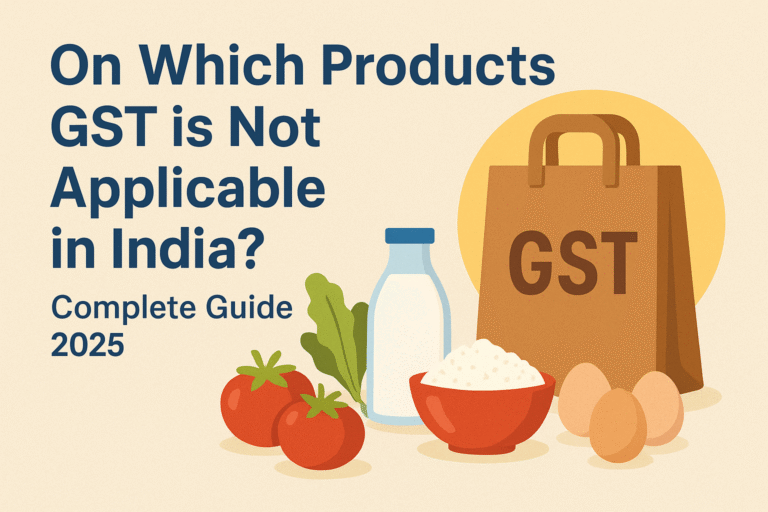What hit the market this morning
-
Tariff shock from the US: The Trump administration signaled steep new tariffs (taking total duties up to ~50%) on Indian goods effective from Aug 27, souring trade sentiment and export earnings assumptions.
-
Global risk-off: Asian equities fell following Wall Street’s overnight dip and lingering macro uncertainty.
-
Fed governance jolt: The ouster of Fed Governor Lisa Cook rattled investors and stoked policy-uncertainty, adding to volatility across global assets.
-
FPI selling resumes: Foreign investors continued to press the sell button in August, especially in financials & IT, amplifying index downside.
-
Rupee under pressure: USD/INR near 87.5–87.7 keeps import costs and margin concerns alive, a headwind for risk appetite.
-
Sector drag: Early trade showed pressure across banks/financials, pharma and broader mid/smallcaps, weighing on the Sensex.
-
Sentiment over earnings: With valuations still full in pockets, any macro shock is prompting faster de-risking.
1) The immediate trigger: New US tariffs on Indian goods
Markets hate uncertainty—and a sudden escalation in trade barriers qualifies. Overnight developments pointed to US tariffs lifting total duties on Indian exports toward 50% starting Wednesday (Aug 27). Investors quickly repriced earnings risk for export-exposed pockets (select pharma, specialty chemicals, engineering, textiles, auto ancillaries), and also factored in second-order effects on supply chains and India’s growth-exports mix.
Why it matters to the Sensex/Nifty:
-
Earnings risk: Higher tariffs can compress dollar revenues from the US market or force price concessions—negative for margins.
-
FX & inflation spillover: If tariffs ultimately affect trade flows and the rupee, imported inputs can get pricier, complicating corporate cost structures.
-
Risk premia: Trade friction lifts the equity risk premium investors demand, particularly for richly valued segments.
Early tick data mirrored this caution: Sensex down 600–700 points intraday, Nifty slipping below ~24,800 in morning trade as tariff headlines hit the tape.
2) The global backdrop turned risk-off
Indian markets took their cue from a weaker Wall Street close, with Asia broadly in the red at the open. Cyclical sectors and high-beta names underperformed as traders faded last week’s “rate-cut optimism” bounce. When global risk appetite sours, EM equities—including India—tend to see beta-led drawdowns, even if the domestic narrative is intact.
3) The Fed twist: Governance shock adds a layer of uncertainty
A surprise move out of Washington—the removal of Fed Governor Lisa Cook—stirred a policy-stability debate. Markets parsed it as a blow to perceived central-bank independence, which can raise volatility across rates, FX, and equities. Even though the dollar slipped and gold ticked up, the broader takeaway was “more uncertainty,” and that is rarely bullish for risk assets in the near term.
4) Foreign Portfolio Investors (FPI) are net sellers again
By mid-August, FPIs had turned consistent sellers, with net outflows crossing ₹20,000–25,000 crore this month. The pressure has been heaviest in financials and IT—the two heavyweight sectors that anchor the indices—magnifying the Sensex/Nifty’s downside whenever risk aversion spikes. Fresh data heading into today’s session still pointed to FII net selling and DII support, a dynamic we’ve seen repeatedly in 2025.
Why that’s important: When FPIs sell large-cap financials/IT, the impact on headline indices is outsized due to weightage, even if domestic institutions are buying on dips.
5) Rupee watch: USD/INR near record territory keeps nerves taut
The rupee hovered around 87.5–87.7 per US dollar into the open, near historic lows. A weaker rupee is a double-edged sword—positive for some exporters but negative for import-heavy sectors (energy, capital goods with imported components) and macro-stability optics. Persistent currency pressure tends to keep FPIs cautious and tightens financial conditions at the margin.
6) Sectoral and thematic impact today
-
Banks & Financials: With FPIs trimming exposure and risk appetite weak, banks/financials led the drag—a familiar pattern in global risk-off phases. Credit quality isn’t the story here; it’s index weight and positioning.
-
Pharma: Defensive on paper, but US tariff/economic uncertainty introduces potential pricing and regulatory/procurement risks for US-facing businesses. Early session weakness reflected this concern.
-
IT Services: Sensitive to US macro and client budgets, IT can wobble when policy uncertainty rises and the dollar path is noisy. FPIs have been net sellers in IT through August.
-
Broader markets: Smallcaps/midcaps extended declines as traders de-risked higher-beta names, a pattern visible in the morning tick-by-tick updates.
7) Technical texture: Key levels traders are watching
While headlines drove today’s move, technicians flagged Nifty ~24,750–24,800 as an intraday pivot, with 24,600–24,650 eyed as deeper support zones and 25,000 as the immediate hurdle on any bounce. For the Sensex, the 81,000 handle was the first battleground with 80,700–80,900 eyed as a support band intraday. These zones can shift rapidly with fresh tariff/policy headlines.
What could swing sentiment next?
-
Tariff execution details & timelines
Markets will parse final tariff texts, lists of affected goods, exemptions, and any path to negotiation. Clarity can reduce the uncertainty premium; escalation would do the opposite. -
US macro prints & Fed signals
Upcoming US inflation and jobs data will adjust rate-cut odds for September, while the institutional debate around the Fed keeps volatility elevated. -
Rupee trajectory
A stabilizing rupee tends to soothe FPIs and reduce imported-inflation fears; further weakness can keep equities on a leash. -
FPI/DII flow balance
If DIIs absorb FPI supply at key support zones, rebounds can be sharp. Keep an eye on the daily prints from NSE/Moneycontrol flow trackers.
Investor playbook: How to think about days like this
-
Separate signal from noise: Tariff headlines are material, but earnings paths vary by sub-sector and company. Exporters with pricing power or diversified geographies may manage better than pure-US plays.
-
Stick to asset-allocation discipline: Don’t let a single session derail longer-term plans. Use pre-defined rebalancing bands rather than chasing moves.
-
Quality bias: Firms with net cash, high ROCE/ROE, strong FX hedging, and diversified revenue tend to ride out policy shocks better.
-
Watch FX & flows: Sustained rupee stability and a turn in FPI flows often precede a durable index bottom.
-
Earnings & guidance: Listen for management commentary over the next few weeks—particularly on US demand, pricing, and tariff pass-throughs.
FAQs
Q1) Did only the US tariff news cause the fall?
No. The tariff shock was the biggest fresh catalyst, but it landed alongside a global risk-off tone after Wall Street’s dip and policy jitters around the Fed—plus ongoing FPI outflows and rupee weakness. That combination amplified the slide.
Q2) Which sectors are most exposed?
Export-oriented segments (select pharma, chemicals, engineering/textiles) face headline risk if US demand or pricing is hit. Financials & IT bear the brunt in the index due to heavy weight and FPI positioning.
Q3) Does a weaker rupee help or hurt?
Both. It can help dollar earners but hurts import-dependent firms and can spook FPIs if volatility rises. Net-net, a stable rupee is friendlier for equity multiples than a falling one.
Q4) Could Indian equities rebound quickly?
Yes—if we see clarity/softening on tariffs, stabilization in USD/INR, and a pause in FPI selling. Domestics (DIIs/retail/SIPs) often cushion declines, enabling swift short-covering rallies near technical supports.
Bottom line
Today’s decline is a classic macro-shock + position-unwind session. The US tariff escalation is the proximate cause; global risk-off, Fed uncertainty, FPI selling, and rupee pressure turned it into a broad-based slip across indices. Long-term investors should focus on balance sheet quality, export mix, and pricing power, while traders will key off 24,750/24,600 on Nifty and 81,000/80,700 on Sensex as immediate decision points.






